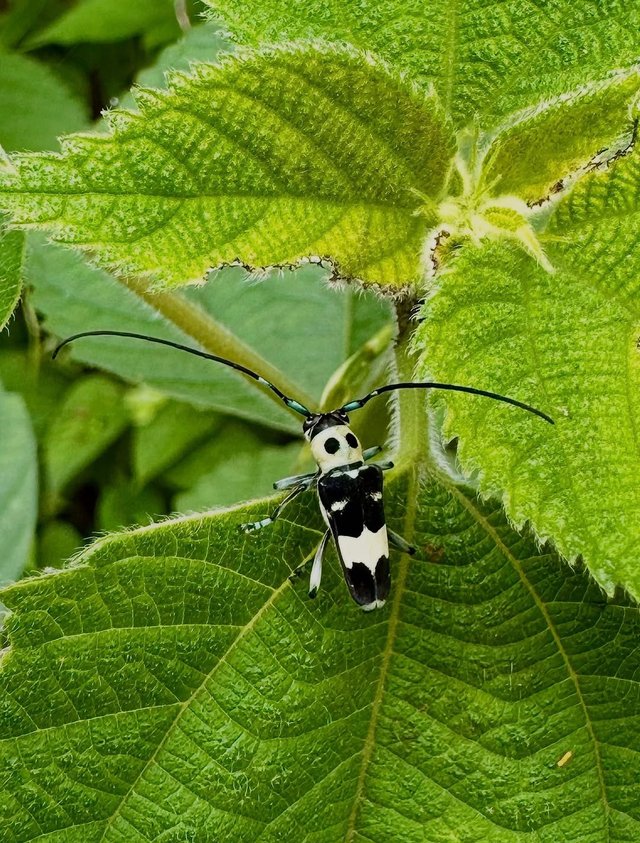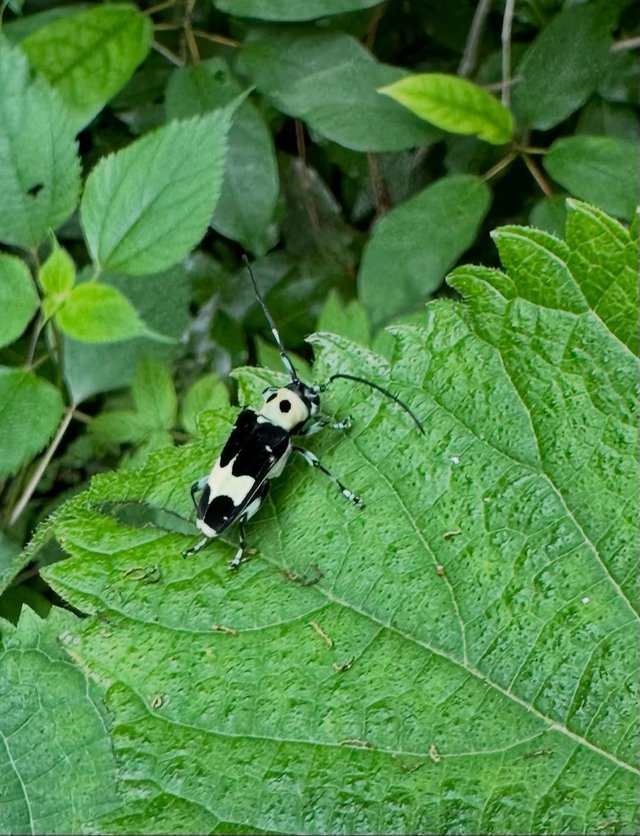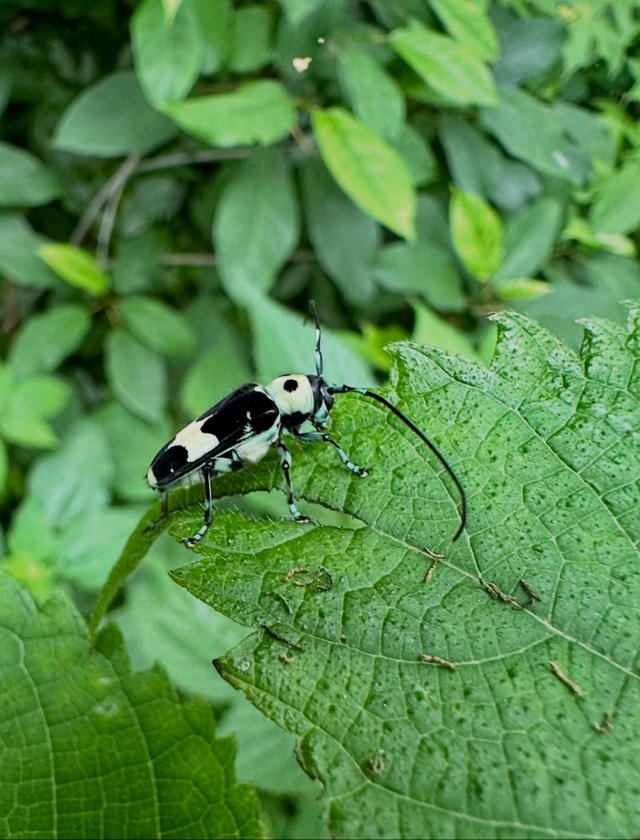Rosalia funebris
Rosalia funebris, commonly known as the Banded Alder Borer, is a strikingly beautiful longhorn beetle that often surprises those lucky enough to spot it. Native to the western regions of North America, especially along the Pacific Coast, this beetle is not just an entomologist’s delight—it’s also a fascinating insect with an elegant appearance and an important ecological role.
Rosalia funebris is immediately recognizable by its dramatic coloration and delicate form. Adults typically range from 15 to 38 mm in length and have a sleek, glossy black body adorned with pale blue-gray markings. The most notable features are the pale bands that encircle its elytra (the hard wing covers) and the long, black-and-white banded antennae—especially extravagant in males, where the antennae can be twice the length of the body.
The species name funebris might evoke images of mourning, likely referencing its stark, funeral-like colors—black and white, with an almost solemn elegance. It’s no surprise that people sometimes mistake it for a type of wasp or exotic insect due to its unusual look.The Banded Alder Borer is commonly found in forests across western North America, from British Columbia down through California and as far east as New Mexico. True to its name, it is often associated with alder trees, but it’s not exclusive to them. It also inhabits oak, willow, maple, and other hardwoods, especially dead or dying ones.
Adults are most often seen in late spring and summer, resting on logs or wooden structures, and they’re particularly drawn to recently felled trees or firewood piles. If you live in the right region and stack your firewood outside, you might just find one paying a visit.



